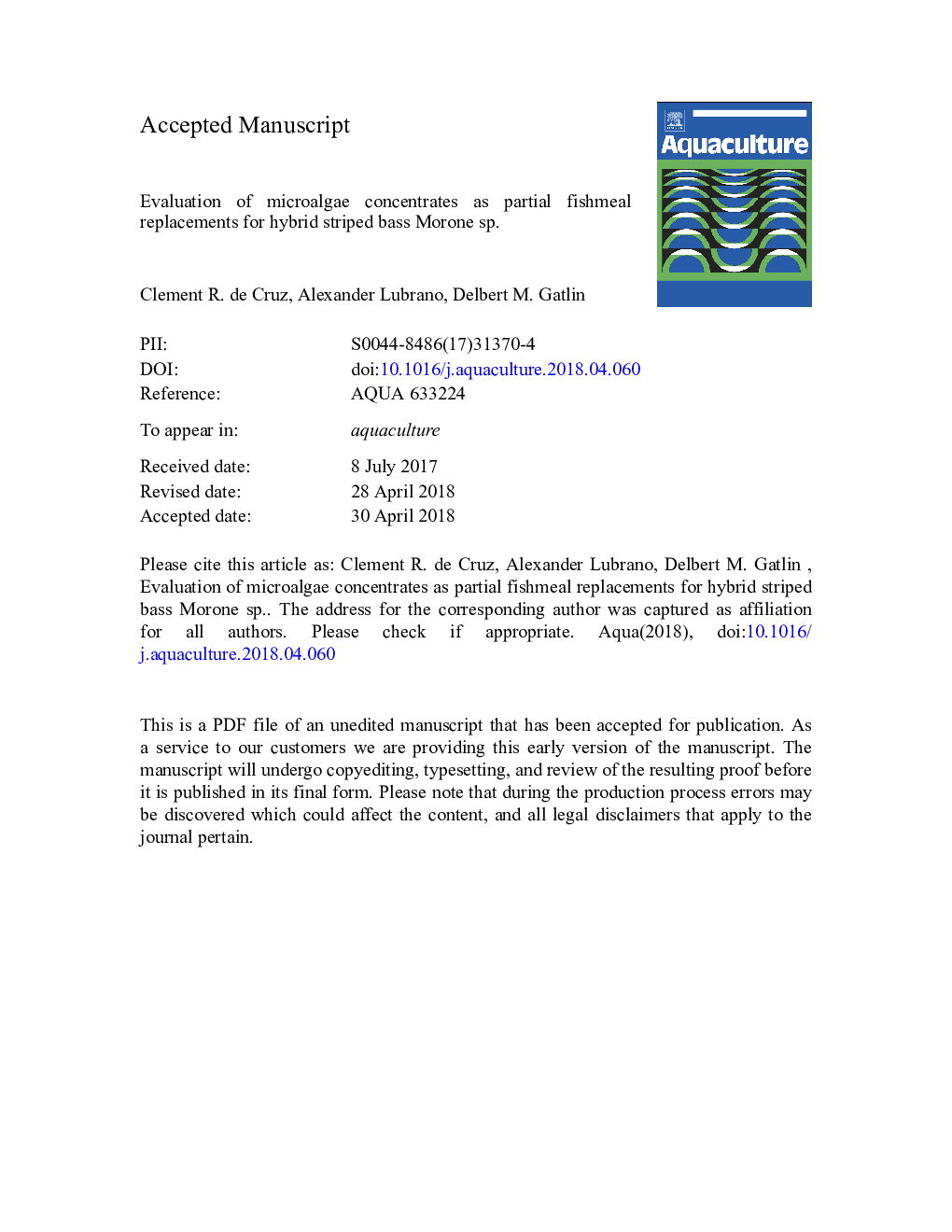| Article ID | Journal | Published Year | Pages | File Type |
|---|---|---|---|---|
| 8493144 | Aquaculture | 2018 | 31 Pages |
Abstract
Weight gain and feed efficiency ratio (FER) of hybrid striped bass were high (>330% of initial weight and 0.79) but significantly (Pâ¯<â¯0.05) affected by diet in trial 1 with no mortality. Fish fed the Reference diet and the one containing BGAB had the greatest but similar weight gain. Substitution of the other algae meals significantly reduced weight gain by 8.2 to 14.7% compared to the Reference diet. Most diets containing algae meal yielded similar FER as the Reference diet except for those containing solvent-extracted Chlorella sp. (both 10% and 20% substitution), Phaeodactylum tricornutum (10%), and Phaeodactylum tricornutumâ¯Ãâ¯Nanochloropsis salina (10% and 20%), in which FER was significantly reduced by 5.8 to 8.1%. Whole-body proximate composition and protein retention efficiency values revealed no significant differences among diets. In feeding trial 2, the various diets with algae products substituted at 10 or 15% of dietary protein did not significantly affect growth performance or whole-body composition of hybrid striped bass compared to the Reference diet. In conclusion, replacement of up to 15% crude protein in the Reference diet with BGAB, the Phaeodactylum tricornutum and Nanochloropsis salina mixture, as well as mixtures of Nanochloropsis salina with Amphora sp. or Cylindrothecatheca sp.was possible without affecting growth performance or body composition of hybrid striped bass.
Related Topics
Life Sciences
Agricultural and Biological Sciences
Aquatic Science
Authors
Clement R. de Cruz, Alexander Lubrano, Delbert M. III,
